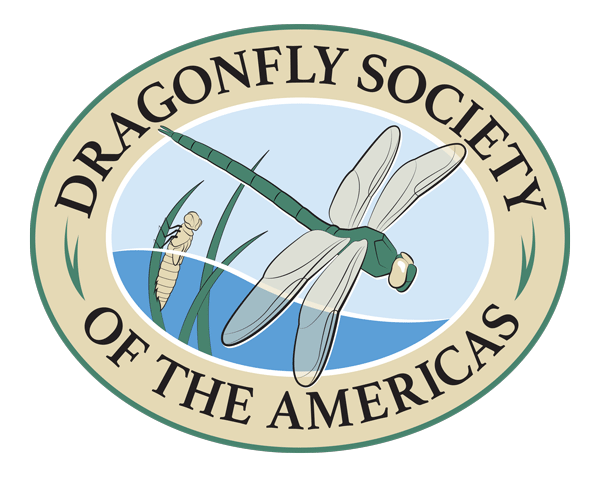Springwater Dancers (Argia plana), male and female in the wheel position. Nachusa Grasslands, Franklin Grove, IL (Photo copyright Cindy Crosby)
Bison at Nachusa Grasslands, Franklin Grove, IL (Photo copyright Cindy Crosby)
Male Sedge Sprite (Nehalennia irene), Nachusa Grasslands, Franklin Grove, IL (Photo copyright Cindy Crosby)
Male Springwater Dancer (Argia plana), Nachusa Grasslands, Franklin Grove, IL. (Photo copyright Cindy Crosby)
Springwater Dancer (Argia plana) female, Franklin Grove, IL (Photo copyright Cindy Crosby)
See the mask? (Look between the eyes!) Male Springwater Dancer (Argia plana), Franklin Grove, IL (Photo copyright Cindy Crosby)
Springwater Dancers (Argia plana) ovipositing, Nachusa Grasslands, Franklin Grove, IL. (Photo copyright Cindy Crosby)
December’s Featured Species: Springwater Dancer (Argia plana)
This month’s DSA species’ focus is the Springwater Dancer damselfly (Argia plana). It is in the family Coenagrionidae, commonly known as narrow-winged or pond damselflies, the largest damselfly family with more than 1,300 species. Measuring between 33-40 mm (approximately 1 ⅓-1 ¾ inches), these beautiful damselflies are found in North America’s Central to Southwest and parts of Guatemala and Mexico. Read on to hear writer and naturalist Cindy Crosby’s story of chasing this brightly-colored species at the eastern part of its range.
“Where the Buffalo Roam”
Most visitors to Nachusa Grasslands are lured there by the possibility of seeing bison. For me, the attractions are insects weighing .001 ounces: the Springwater Dancer damselfly (Argia plana).
In 2013, I began collecting Odonata species data at Nachusa Grasslands, a 4,000-acre Nature Conservancy preserve in Franklin Grove, IL. I was working on my master’s degree at University of Stevens Point, WI, in environmental interpretation and Nachusa was on the brink of introducing bison. Visitation numbers were expected to dramatically increase. My degree work focused on engaging and connecting visitors to Nachusa Grasslands in ways that didn’t damage the site, which contains rare remnant prairie. When I asked who was monitoring the Odonate populations, the answer was---no one! I was excited to begin.
As I chased dragonflies at Nachusa, I became acquainted with the contours of this rural preserve. The underlying geology of the site ---St. Peter sandstone, with a rare dolomite fen--- was the setting for many common species that were, none-the-less, new to me. At a natural spring, I saw my first red damsel damselfly (Amphiagrion sp.) and learned that we aren’t really sure whether it is the western species (abbreviatum) or the eastern species (saucium). As a naturalist, this was one of my first introductions into the mysteries of dragonfly ID! It’s not always easy. I saw my first Midland Clubtail (Gomphus fraternus), the tiny Sedge Sprite (Nehalennia irene) and the even tinier Citrine Forktail (Ischnura hastata). But nothing was as exciting as my first glimpse of the Springwater Dancer damselflies.
As I waded in one of the creeks, collecting data, I caught a glimpse of something blue. Bright blue! I grabbed my camera and snapped a few shots, then watched them for a while. What species could it be? I’d never seen a damselfly in that bright, bright blue. Back home, leafing through the field guides and comparing them to my photo, I thought “Springwater Dancer.” But I wasn’t sure. Although it is a common “dancer” in the Southwest, at that time, they weren’t widely seen in Illinois. I sent my photos to a local Odonata mentor. Yes! He confirmed it. Argia plana. Springwater Dancer.
Males on my site are an impossible blue; most females are a lavender-ish brown. Some females are polymorphic, ranging from blue to brown to olive, with eyes that are usually brown. Dennis Paulson’s Dragonflies and Damselflies of the East field guide advised me to look for males perched on shoreline vegetation. That’s where I found them! Paulson notes the species prefers small to medium shallow rocky or sandy streams, and is considered indicative of springs in some parts of its range. Bingo! The Nachusa habitat is a perfect fit.
Dragonfly expert Marla Garrison, author of Damselflies of Chicagoland, wrote my favorite description of the markings on the top center of this species’ head---“a Mardi-Gras mask!” Exactly. In 2010, Garrison found this species in Cook County, about as far east in Illinois as you can go. Is its range expanding? It will be interesting to find out!
In 2021, I watched several pairs ovipositing in the creek. In a year when there has been more discouraging news than encouraging news, it's nice to know that the Springwater Dancers continue to make their home at Nachusa Grasslands.
I can’t wait to see them next spring.
******
Our guest blogger for December is Cindy Crosby, the author of Chasing Dragonflies: A Natural, Cultural, and Personal History (Northwestern University Press). Cindy has monitored dragonflies in Illinois since 2005, and helps supervise 20 dragonfly monitors in the Chicago region.







